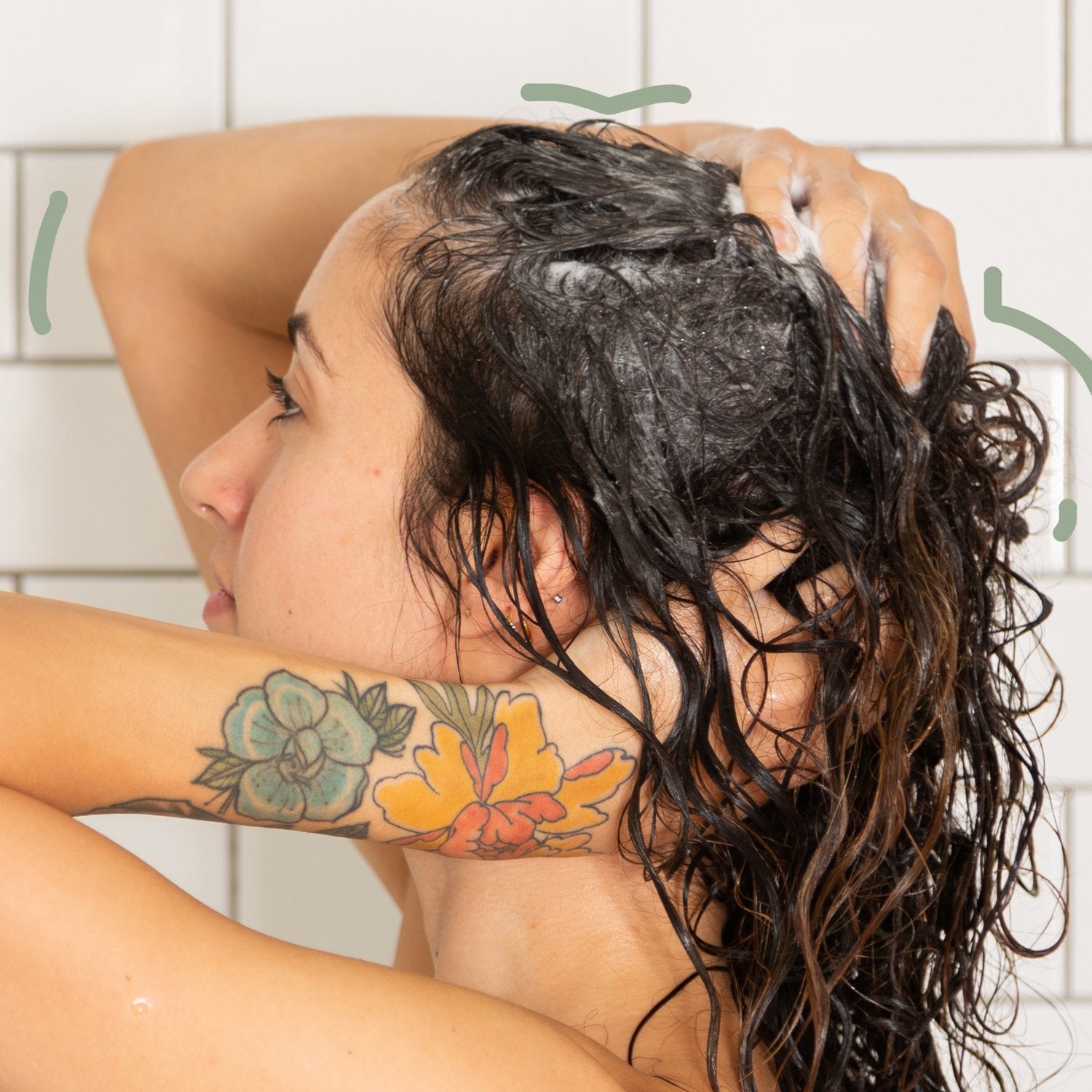…and introducing our sulfate-free shampoos
Not a day goes by when we are not asked for sulfate-free shampoos.
When we ask people why they want them, the answer is invariably either, “My hairdresser said to avoid sulfates” or, “I read something online saying they were bad”. So we want to clear up some things.
Want to know how much science there is showing all sulfates are drying, irritating, strip colour and keratin or just generally should be avoided? None. None whatsoever. And yes, there absolutely have been studies trying to find out if this is the case. In fact, the opposite is often the case.
Let’s be clear, sodium lauryl sulfate (SLS) and sodium laureth sulfate (SLeS) are the two most (in)famous sulfates, but they are not the only ones. We use sodium coco sulfate in most of our shampoo bars which produce lots of fluffy lather but is gentle enough to use in baby shampoos.

What are sulfates anyway?
Sulfates are a type of surfactant, the ingredient in products that makes foam, or binds together water and oil. There are many, many surfactants out there, made from all kinds of derivatives (most commonly from palm oil or petrochemicals). Not all are safe for cosmetic use – some are meant for household cleaning or industrial degreasing. For more detail on how they work, have a read here.
What about behentrimonium methosulfate? Nope - not a sulfate! This is a key ingredient in our conditioners and is a cationic conditioner – it binds to your hair shaft and leaves it smooth, shiny and soft (but it washes off with shampoo – so no build-up here!).

How we use surfactants
The golden rule when formulating foaming products is to combine surfactants for a gentler product. One surfactant creates a harsher product, two is gentler and three is better still (and we always have three). There is absolutely no merit to the idea that a smaller ingredient list is safer. Combining surfactants alters the way they form micelles in solution (again, read this blog), resulting in an efficient cleanse with lots of delicious foam, but without drying and irritation.
We don’t use SLS or SLeS
Surfactants are made using the fatty acids found in oils like coconut and palm. Oils contain a variety of fatty acids, like lauric, palmitic and myristic. Fatty acids differ only by how long their carbon chains are in the molecules. SLS uses only lauric acid (usually from palm oil), which means it is a phenomenally effective cleanser. In my opinion, it’s too effective – too harsh for our products. Sodium coco sulfate (SCS) is a mix of all of the fatty acids from coconut oil, including lauric, which means it is milder, but still produces that lather we want. It is not the same ingredient as SLS with a different name designed to mislead consumers (you should know that we’re not like that by now).
Don’t be fooled though - despite the name, sodium coco sulfate can be made from palm oil too… so make sure you ask your manufacturer! Of course, ours comes from coconut.
So if sulfates are fine, why bother with sulfate-free products?
Because people want them, basically. There’s no evidence that a sulfate-free formula will prolong your colour, lead to less frizz or give you more shine or body. But we listen to what you want and if you want a sulfate-free shampoo, you’re going to get the best one we can manage!
We've released four sulfate-free shampoos –Tone It Down for colour-treated or brassy hair, Professor Curl for curly hair, Sorbet for balanced hair, and a scent-free shampoo designed for the hyper-sensitive skinned among you.
Formulating them has been hard because finding a solid, palm-free surfactant at a decent price has been difficult. But we have found one! Sodium cocoyl glycinate, to go alongside my favourite sodium cocoyl isethionate and a sugar derivative - cocoyl methyl glucamide. We’ve worked hard to ensure they produce the same after-feel, and give you lots of lather (the reviews say it all!).
Will you notice a difference?
Maybe. Sulfate-free formulas are more expensive to produce, as they use more rare surfactants – but we’re keeping them the same price as our others. Those of you who use lots of oil-heavy products like pomades or waxes may find you need to shampoo twice to get really clean. Those who like clarifying shampoos, have naturally oily hair, or go swimming a lot might want to go with something with a bit more cleansing power, too – like St Clements (which most people use without a conditioner).

